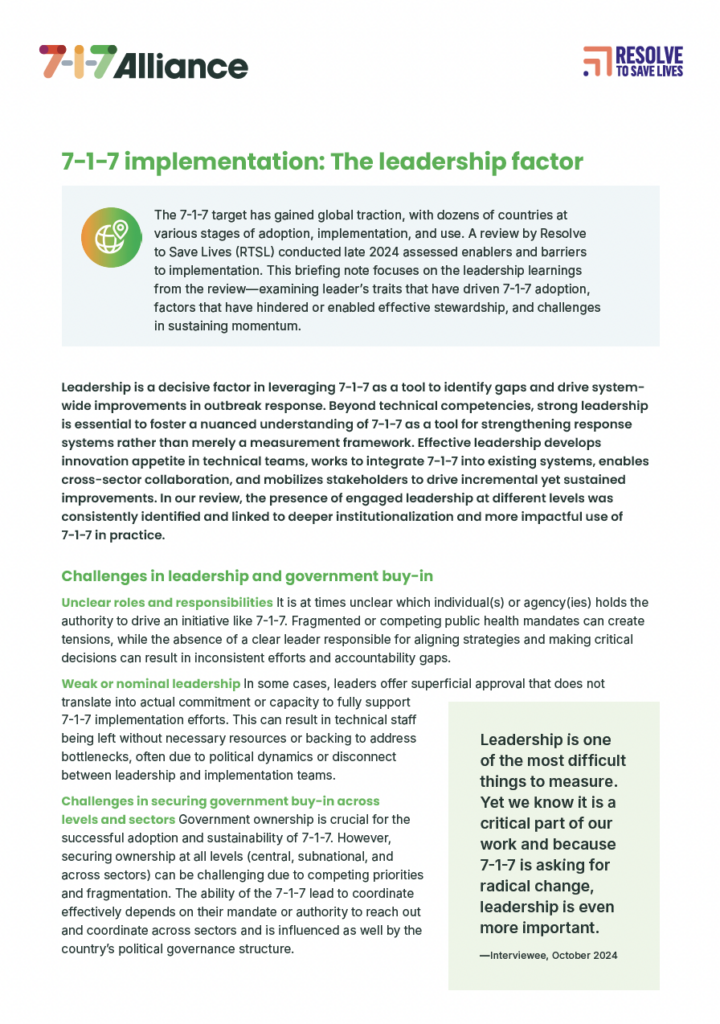From 18 countries to yours: Actionable 7-1-7 bottleneck insights

First post of our 7-1-7 Bottleneck Insights series that highlights the value of bottleneck analysis through a multi-country synthesis.
Unleashing the full potential of 7-1-7: A strategic guide for international partners

To unlock 7-1-7‘s full potential, it must be applied as a framework for action—not just a monitoring indicator.
Real-time learning, real-world impact: Unleashing the potential of 7-1-7

First systematic evaluation of the 7-1-7 Alliance’s efforts to scale the 7-1-7 target, and the enablers and barriers to 7-1-7 adoption and use from the perspective of implementers.
Webinar: The leadership factor

Webinar held on March 13, 2025 focusing on leadership and advocacy—two key components of an effective use of the 7-1-7 target.
7-1-7 implementation: The leadership factor

Learnings from a 7-1-7 implementation review examining leader’s traits that have driven 7-1-7 adoption, factors that have hindered or enabled effective stewardship, and challenges in sustaining momentum.
7-1-7 orientation training package

All you need to host a half-day or full-day 7-1-7 orientation training workshop.
How Brazil improved responses to disease outbreaks with 7-1-7 over two years

In early 2023, health officials in Recife, Brazil started using the 7-1-7 target to track and contain infectious disease outbreaks during Carnival. New data for the past two years shows significant progress in reaching the target.
Implementing the 7-1-7 target in Brazil

This brief summarizes three years of 7-1-7 adoption and use in Brazil, the first federated country to implement the target at both local and state levels.
Evaluation of response to a cholera outbreak in January 2024 using 7-1-7: a case study of Elegu Point of Entry, Uganda

BMC Public Health article published in December 2024 authored by the Uganda National Institute of Public Health.
Webinar: Improving performance with 7-1-7 bottleneck analysis

Webinar held on October 24, 2024 focusing on conducting effective bottleneck analysis with 7-1-7 to improve outbreak detection, notification and early response.